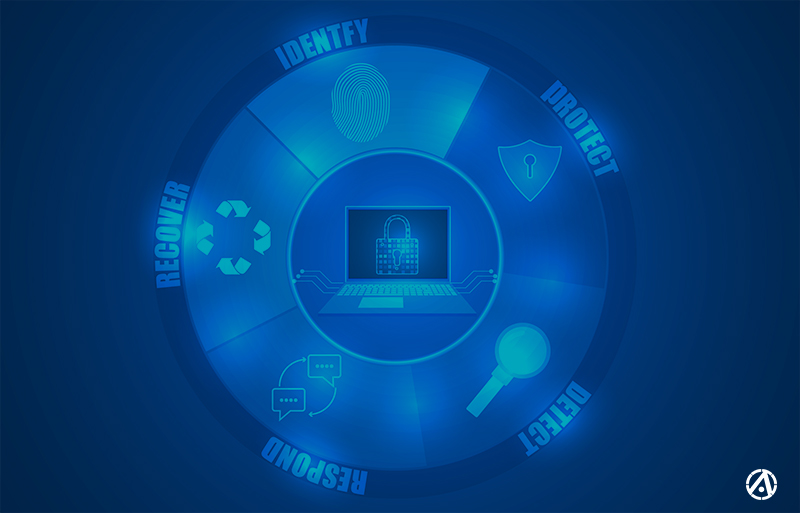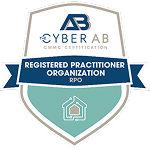The National Institute of Standards and Technology (NIST) has released the Cybersecurity Framework (CSF) 2.0, an updated version of the previously adopted CSF 1.1. This new version addresses the constantly evolving landscape of cybersecurity threats and challenges and incorporates feedback from various stakeholders to ensure it remains relevant and effective for today’s needs.
Previously, some organizations may have misunderstood the framework’s applicability due to its title, “Improving Critical Infrastructure Cybersecurity.” However, the NIST clarified that such a title does not apply to CSF 2.0, as the framework is a versatile tool designed for organizations of all sizes and sectors.
Whether you are part of a small business, a multinational corporation, a government entity, an academic institution, or a nonprofit organization, CSF 2.0 is an excellent option for enhancing cybersecurity posture. This article aims to provide a detailed understanding of the key features and changes in CSF 2.0 and practical insights and recommendations for building cyber resilience using this robust framework.
Unpacking NIST CSF 2.0’s Key Changes and Additions
CSF 2.0 is an update and a comprehensive overhaul designed to address the changing cyber threat landscape. Below are key changes and additions:
- Expanded Scope: CSF 2.0 extends its scope beyond traditional cybersecurity, addressing interconnected aspects such as privacy considerations and supply chain risks.
- Updated Categories and Subcategories: CSF has five core functions: Identify, Protect, Detect, Respond, and Recover. However, CSF 2.0 added the ‘Governance’ function to communicate modern cybersecurity challenges and guide the establishment of risk management strategies, policies, and oversight mechanisms.
- Emphasis on Cyber Resilience: CSF 2.0 places a significant emphasis on an organization’s ability to anticipate, understand, recover from, and adapt to adverse conditions, such as system and process compromises.
- Enhanced Clarity and Usability: Clear and intuitive language makes CSF 2.0 more accessible, ensuring better alignment and implementation across different sectors.
- Increased Flexibility: The introduction of “Organizational Profiles” allows detailed risk management at enterprise and system levels, enabling organizations to customize their cybersecurity posture with flexibility and adaptability.
Understanding Organizational Profiles in NIST CSF 2.0
Implementing organizational profiles within the context of NIST CSF 2.0 involves creating customized frameworks that align cybersecurity activities with the unique needs and risk tolerances of an organization’s various environments.
Organizational profiles serve as blueprints for guiding cybersecurity efforts across diverse areas, as applicable, such as business IT infrastructure, major business applications, cloud services, IoT, and industrial control systems (ICS). In this way, applying the subcategories and resulting controls is not a one-size-fits-all.
Per the NIST CSF 2.0, organizational profiles are developed to achieve the following objectives:
- Define the organization’s current and target cybersecurity posture.
- Identify specific cybersecurity objectives, priorities, and resource allocations.
- Tailor the selection and implementation of cybersecurity controls and practices based on the organization’s risk appetite and operational requirements.
- Establish a roadmap for continuous improvement and adaptation to evolving cyber threats and technological changes.
- Enable organizations to benchmark their cybersecurity maturity and progress against industry standards and best practices.
By creating organizational profiles for different environments, organizations can prioritize cybersecurity initiatives effectively, allocate resources efficiently, and enhance resilience against cyber threats in alignment with the core functions and categories outlined in the NIST CSF 2.0. These profiles provide organizations with a structured approach to managing cybersecurity risks while promoting flexibility and scalability across diverse operational domains.
Addressing Emerging Threats and Technology Trends with CSF 2.0
Recognizing the transformative impact of emerging technologies on business operations, CSF 2.0 extends its reach to encompass diverse technology environments, including cloud computing, the Internet of Things (IoT), and artificial intelligence (AI) systems. CSF 2.0’s responsiveness to emerging threats and technology trends positions it as a forward-looking framework.
By embracing diverse technological environments and staying ahead of emerging threats, organizations can leverage CSF 2.0 as a proactive and adaptive solution to safeguard their digital assets.
Recognizing the intricate nature of modern supply chains, CSF 2.0 extends its purview to address supply chain risks. With the integration of supply chain risk management (SCRM) principles and best practices, the framework equips organizations with the tools to identify and mitigate risks associated with suppliers, partners, and third-party vendors. This proactive approach reflects the interconnectedness of today’s business landscape and underscores the importance of securing the entire supply chain ecosystem.
Roadmap for CSF 2.0 Adoption and Implementation
Organizations must adopt a strategic approach that aligns with their unique cybersecurity needs and objectives when implementing CSF 2.0. This roadmap offers guidance through the adoption process:
- Assess Current Posture: The initial step involves thoroughly assessing your current cybersecurity posture about the NIST CSF 2.0 standards. This step often requires gap analysis to identify and document areas where your cybersecurity practices align well with the framework and some improvement areas that need enhancements.
- Set Priorities: the next step is to prioritize risk assessment to evaluate the potential impact of identified gaps on your organization’s risk profile.
- Develop an Action Plan: Developing a comprehensive action plan involves setting priorities, establishing goals, allocating resources, and creating realistic timelines.
- Implement Changes: By prioritizing implementation, engaging stakeholders, and launching a training and awareness initiative, execute the changes outlined in the action plan to ensure employee cooperation and understanding.
- Monitor and Review: Cybersecurity is an ongoing process. Thus, regularly reviewing organizational cybersecurity practices against the NIST CSF 2.0 ensures ongoing compliance and adaptation to changes in the threat landscape.
CSF 2.0 emerges as a dynamic and adaptable framework, empowering organizations to navigate the complex terrain of cybersecurity. By understanding its key features, embracing changes and following a strategic roadmap, organizations can enhance their cybersecurity resilience, fortify defenses, and contribute to a secure digital landscape by understanding its key features, embracing changes, and following a strategic roadmap. As we embark on this journey with CSF 2.0, the future of cybersecurity looks promising, robust, and well-prepared for the challenges.








